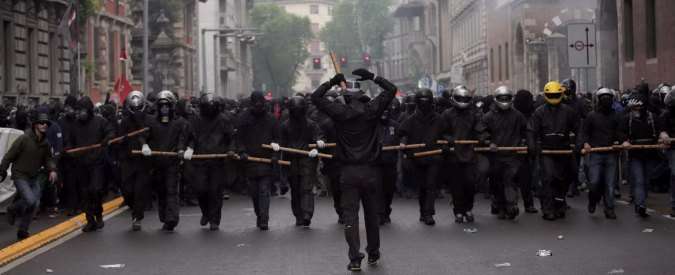From the beginning the West German state did not take kindly to young Autonomen, whether they were occupying nuclear power plant building sites or unused apartment buildings. In the winter of 1980 the Berlin city government decided to take a hardline against the thousands of young people living in squats throughout the city: they decided to criminalize, attack and evict them into the cold winter streets. This was a much more shocking and unusual action in Germany than it would be in the U.S., and created much popular disgust and condemnation of the police and government.
From December 1980 on there was an escalating cycle of mass arrests, street fighting, and new squatting in Berlin and throughout Germany. The Autonomen were not to be cowed, and each eviction was responded to with several new building occupations. When squatters in the south German city of Freiburg were mass arrested, rallies and demonstrations supporting them and condemning the police state\’s eviction policy took place in every major city in Germany. In Berlin on that day, later dubbed \”Black Friday,\”upwards of 15,000 to 20,000 people took to the streets and destroyed an upper class shopping area.(1)
This was the seething cauldron of oppression and resistance from which the Black Bloc was birthed. In late 1981 the German government began legalizing certain squats in an attempt to divide the counterculture and marginalize more radical segments. But these tactics were slow to pacify the popular radical movement–especially since the period of 1980-81 had seen not only a brutal treatment of squatters but also the largest police mobilization in Germany since the reign of the third Reich in order to attack non-violent, sitting protesters at the \”Free Republic of Wendland,\” an encampment of 5000 activists blocking the construction of the Gorleben nuclear waste dump.(2) Even formerly ardent pacifists had been radicalized by the experience of sustained, violent police oppression against diverse squats and activist occupations.
In response to violent state oppression radical activists developed the tactic of the Black Bloc: they went to protests and marches wearing black motorcycle helmets and ski masks and dressing in uniform black clothing (or, for the most prepared, wearing padding and steel-toed boots and bringing their own shields and truncheons). In Black Bloc, autonomen and other radicals could more effectively fend off police attacks, without being singled out as individuals for arrest and harassment later on. And, as everyone quickly figured out, having a massive group of people all dressed the same with their faces covered not only helps in defending against the police, but also makes it easier for saboteurs to take the offensive against storefronts, banks and any other material symbols and power centers of capitalism and the state. Masking up as a Black Bloc encouraged popular participation in public property destruction and violence against the state and capitalism. In this way the Black Bloc is a form of militance that mitigates the problematic dichotomy between popularly executed non-violent civil disobedience and elite, secretive guerilla terrorism and sabotage.
via ainfos.ca

